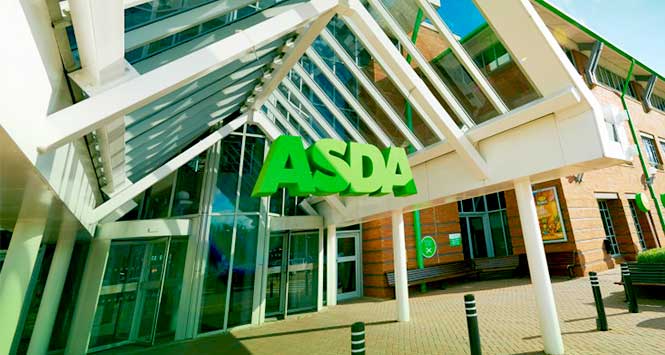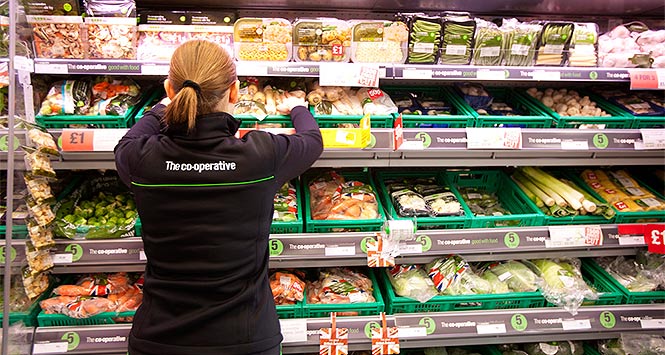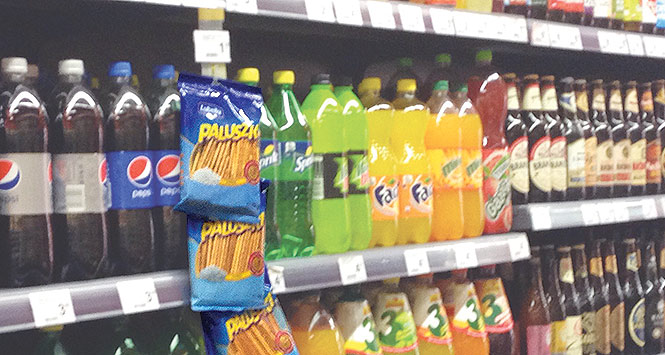When once it was the march of the 100,000 sq ft megastores that threatened the livelihoods of independent retailers, it is now smaller supermarket formats that are slowly taking over, as a new study from him! found.
by Tom Fender
While many people have been focusing on the increasing number of ‘convenience format’ stores, the small supermarket channel has been quietly growing in value, store numbers and shopper satisfaction. Small supermarkets now account for 22% of UK food & grocery spend with a total value in line with the convenience sector (21%). The channel is predicted to grow 12% in the next five years.
Small supermarkets are those stores between 3,000-25,000 sq ft and are often located on a High Street. Shoppers use them for big top up shops or small regular shops. They are bigger than convenience stores (under 3,000 sq ft) and attract a bigger basket size, but they are smaller than superstores (25,000+ sq ft.) In total, there are now 7,300 small supermarkets in the UK, including discounters.
Small supermarkets attract predominantly female shoppers and the biggest shopping mission is a ‘top up’ including 6–7 items.
Shoppers are increasingly recommending these small supermarkets to their friends and family – 48% are ‘promoters’ vs 41% in 2011.
However, 8% of shoppers fail to purchase something they arrived intending to buy; something that EPOS and loyalty card data can never tell us is what shoppers fail to buy. Fruit & vegetables are suffering most.
We estimate failed purchases are costing the industry £295k per store, per year. This is not about encouraging shoppers to trade up or driving incremental purchases or visit frequency, this is about meeting shopper’s basic needs so they can simply buy all the products they arrived intending to buy.
We’ve also seen unplanned purchases hit a three year high and a much higher percentage of customers makes unplanned purchases in small supermarkets vs. supermarket convenience stores. The top three drivers of unplanned purchases are promotions, packaging, and display. At supermarket c-stores, promotions are still the number one driver of unplanned purchases but packaging & display have A LOT more impact in small supermarkets.
Some other insights include:
- Budgens & Asda have the highest proportion of shoppers making unplanned purchases (31%)
- Chilled food, confectionery and fruit & veg are the categories most bought ‘unplanned’. This is very different to a supermarket convenience store environment, where the top categories bought ‘unplanned’ are, confectionery (by a long way), cakes/biscuits, and fruit & veg.
- At home mums & women in general are much more likely to make unplanned purchases, retailers and suppliers should tailor relevant communications towards them.
Loyalty schemes
Membership of loyalty schemes is up but card usage is down. 60% of small supermarket shoppers now have loyalty cards (where available), up from 50% in 2009. You may not be surprised to hear that loyalty schemes do seem to drive loyalty! Loyalty scheme members visit more often – 88% visit every week vs 75% non-members, they have bigger baskets – 38% buy 5+items vs 23% non-members and they spend 28% more, on average, per trip. However the proportion of those actually using their loyalty cards in-store is down slightly (76% in 2012 vs 78% in 2011).
Of course, the fewer people who use their cards the less accurate loyalty card data is, which means retailers and suppliers are missing out on information on certain shoppers. People least likely to use their loyalty cards are men and younger shoppers – retailers need to consider what they can be doing to encourage these shoppers to use their cards. In addition, those spending less than £10 are also less likely to use their loyalty cards, again meaning loyalty data is missing out on understanding their important ‘top up’ shopper.
Waitrose loyalty card gives shoppers instant gratification by allowing them to claim a free coffee, a great way to encourage shoppers to use their cards. At grocery stores in the US shoppers can simply type their phone number on to the chip & pin keypad instead of digging around in their purse for a loyalty card.
Promotions
Promotions as a driver of store choice remains stable (17% vs 17% in 2010), and overall promotional penetration remains steady (32% of shoppers bought on promotion in 2012 vs 32% in 2011 and 37% in 2010). But despite no significant growth in shoppers buying on promotion, the promotions on offer are increasingly driving incremental sales (the proportion of shoppers who hadn’t intended to buy the promotional product on entering store has risen to 31% vs 24% in 2010.)
Promotions are also increasingly impacting brand choice. The proportion of promotional purchases which influenced brand choice i.e. promo shoppers who said they had already intended to buy product type but the fact it was on promotion influenced their specific brand choice has risen from 41% to 33% in 2010.
We’ve seen the percentage of shoppers purchasing something on promotion increase previously in this channel, but this has started to plateau. Two years ago nearly 1-in-2 shoppers who bought a product on promotion were going to buy that product anyway, meaning retailers were just giving away margin. This has changed now, promotions are back to driving incremental purchasing and also working harder for brands by increasingly affecting brand choice in-store.
Knowing how to put up a fight
Small supermarkets need to operate a certain way, and work with suppliers in a way that maximising sales potential. By knowing a little about this works, convenience retailers can ensure they’re in a strong position if a small supermarket opens near by.
Location is the number one driver to store at small supermarkets and convenience stores, but value for money and range of fresh foods are much more important at small supermarkets. A much higher proportion of shoppers buy something ‘unplanned’ in small supermarkets vs supermarket convenience stores (24% vs 18%). Shoppers are much more likely to be looking for promotions at small supermarkets and are more likely to make unplanned purchases.
Own label obviously forms an important part of the range within this channel too. Shoppers on a ‘main shop’, ‘top up shop’ or ‘meal for tonight’ shop are most likely to purchase own label, so we can see that own label is important in both small supermarkets and supermarket convenience stores. Other mission such as snacking and newsagent are more brand-led.
All in all, the competition for local retailers is getting tougher and tougher and they must continue to compete where they can and stay ahead on the areas where supermarkets can’t, such as customer service and community involvement.





